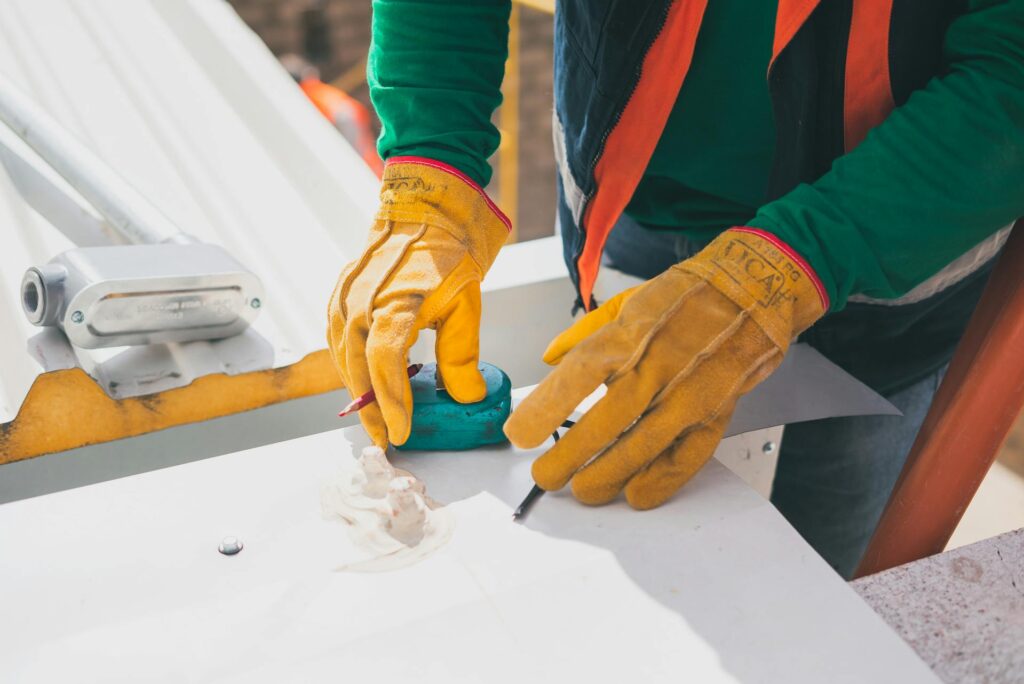How Wearable Tech Is Improving Construction Worker Safety
September 29, 2025

For industry pros know better than anyone that construction sites can be dangerous places. And it’s not surprise: From height hazards and electrical issues to heavy machinery, noise, and hazardous materials, construction crews face scores of potential perils each and every day.
While compliance with OSHA regulations is a must-do for every site manager, that doesn’t make a site risk-free. In fact, the most recent data from the Bureau of Labor Statistics (BLS) shows that about 21,400 workers are injured and nearly 350 workers die per year on construction jobsites.
Recently, however, wearable technology has shown that it can play an important role in employee safety on construction worksites. Keep reading to learn how wearables could make work safer for construction professionals.
Types of Wearable Technology in Construction
The wearable technology most useful in construction probably doesn’t look like the products you encounter in daily life. Instead of smartwatches and smart rings, employers will likely get the best results from options like:
Smart Helmets
Smart helmets have sensors that can monitor:
- Temperature, air quality, and other hazards
- Worker fatigue
- Worker location
- Head strain
Some can also include augmented reality (AR) visors that display hazard alerts and information that makes work safer.
Smart Vests and Clothing
Smart vests and clothing are easy to wear at all times, which should help improve compliance among workers. Their sensors can monitor:
- Signs that someone has fallen
- Heart rate and other vitals
- Location
Smart clothing can also coordinate with other digital systems to allow geofencing that prevents people from entering restricted areas.
Smart Boots
Smart boots are also easy for people to wear throughout their shifts. The sensors could monitor:
- Location
- Small movements that indicate discomfort or physical stress
- Slips, trips, and falls
- Signs of fatigue
Exoskeletons
Smart exoskeletons might sound futuristic, but companies have already started developing and producing them. They can include features like:
- Sensors that recognize physical strain and recruit mechanical assistance when needed
- Springs that help prevent repetitive motion injuries and strain
- Support for parts of the body that get injured often (such as shoulders, arms, and back)
Environmental Sensors
Environmental sensors are often designed to clip onto uniforms, so employees can put them on when they enter areas that might present dangers, such as excessive heat or noise. Sensors can also alert managers when workers show signs of distress, such as falling.
Benefits of Wearable Technology for Construction Worker Safety
Adding wearable technology to the worksite will require a financial investment. In return, your company can benefit from the following:
Enhanced Real-Time Monitoring
Threats tend to exist in certain places. For example, you would likely plan for workers encountering dangerous gases when working underground. Sometimes, though, the worst threats are the ones you can’t predict. That’s why enhanced real-time monitoring matters so much. You can use the wearables to get immediate alerts as conditions become dangerous. You can also track vital signs continuously so you know when someone needs to take a break.
Improved Compliance With Safety Regulations
The best safety regulations only work when people follow them. Wearables can automatically collect data and alert managers when someone doesn’t comply. For example, a manager might get notified when a worker enters a worksite without wearing their hard hat. You might learn that some employees need additional training to follow safety requirements.
Increased Productivity
Productivity increases when you help workers avoid injuries that prevent them from completing tasks efficiently or force them to take time away from their jobs.
Reduction in Workplace Incidents
The data you collect from wearables does more than prevent immediate injuries. You can use that information to continually improve your safety efforts, which will lead to fewer accidents and injuries over time.
Should Your Construction Company Invest in Wearables?
Like all tech innovations, piloting wearables it a great place to start. We recommend evaluating each site carefully, looking at safety data you’ve compiled so that you can decide where these safety investments could make the best impact.
Regardless of whether you choose to implement safety wearables on your construction site this year, next year, or some date in the future, you can always add more safety precautions to your daily operations. Choosing a compliant, safety-focused staffing partner like HireQuest Direct is a great place to begin.
Learn more about our staffing solutions at HireQuestDirect.com.







